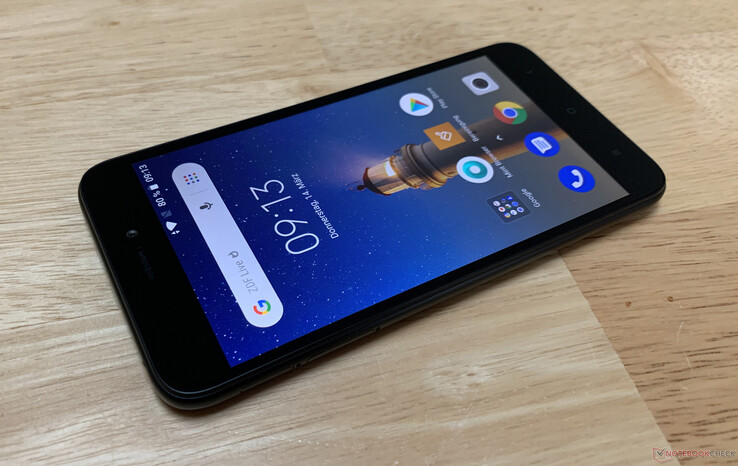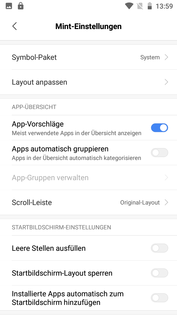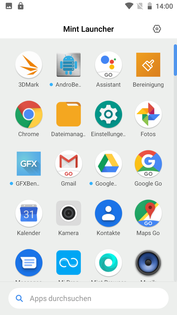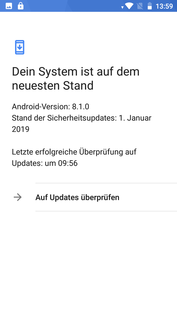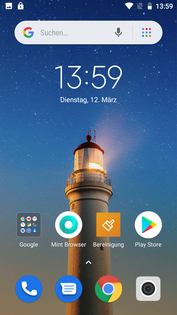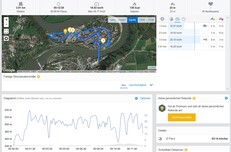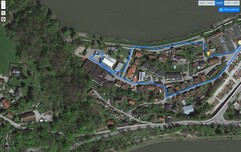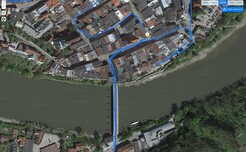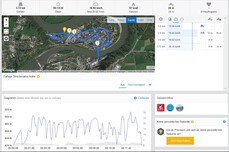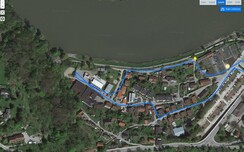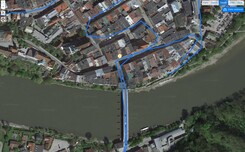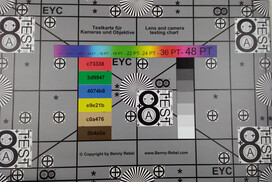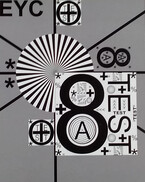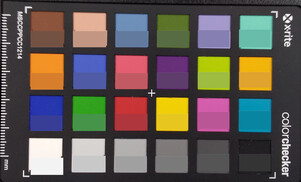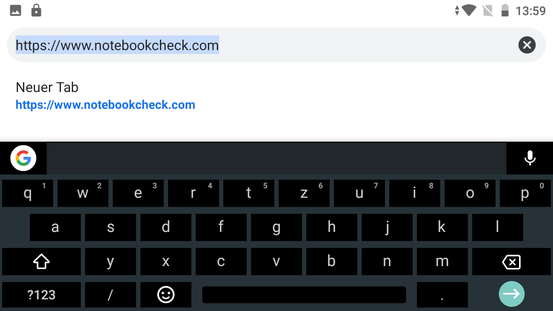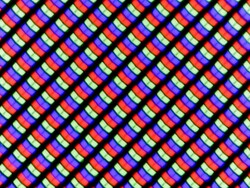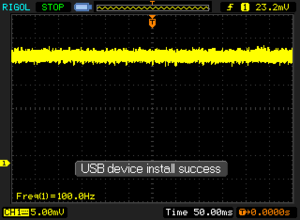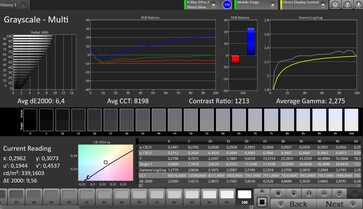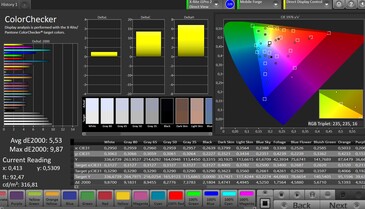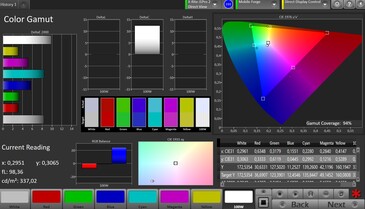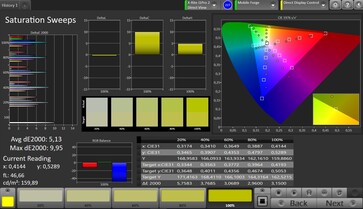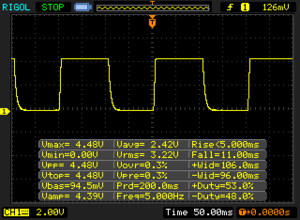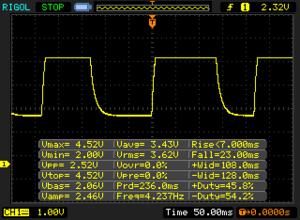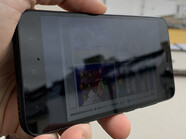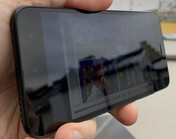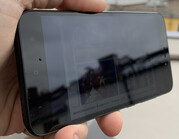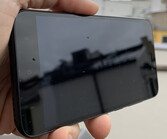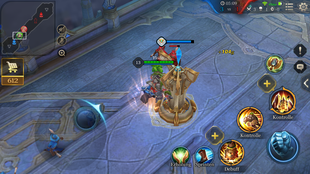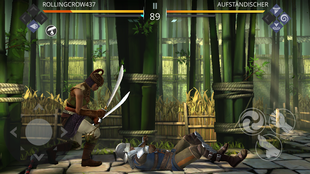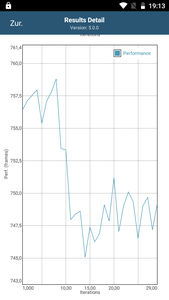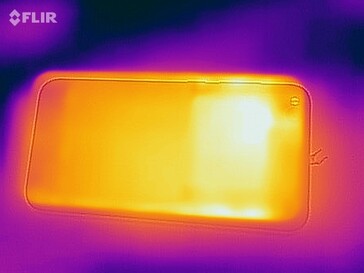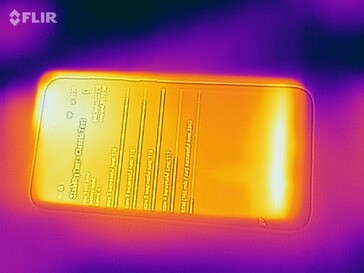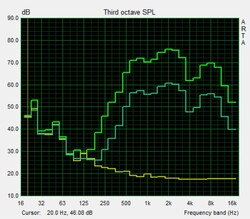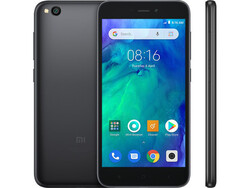Xiaomi Redmi Go Smartphone Review
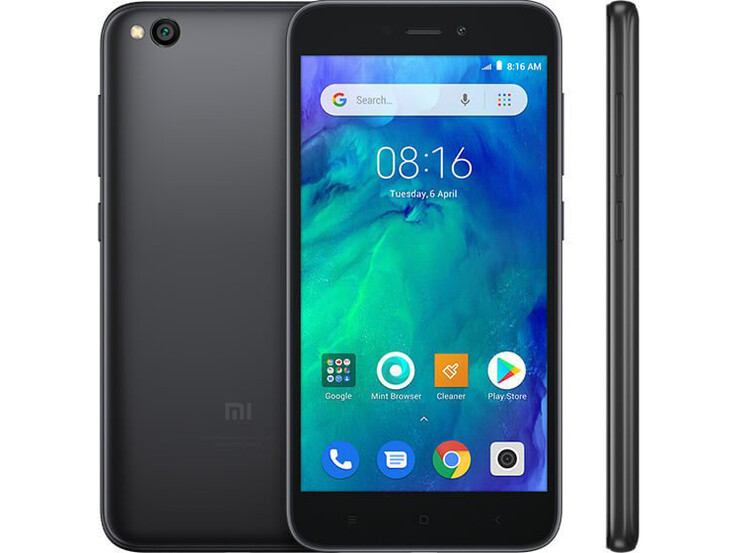
Xiaomi's Redmi smartphones have always been winners in price-performance ratio and the attention is even bigger now when the manufacturer comes up with a smartphone with Android Go which is in the absolutely lowest price range under 100 Euros (~$113). Even though the performance offered by this price range has been too low until now, the question is whether Xiaomi will also succeed to make the entry level segment attractive for people with high demands with the Redmi Go.
At first sight it is noticeable that Xiaomi is relying on a Qualcomm-SoC which is not commonly found in devices under 100 Euros (~$113). The screen resolution is also higher than is common in this price class. These are good signs, however we are not letting the Xiaomi Redmi Go slip so easily: The smartphone has to compete against the Nokia 1, the slightly more expensive Honor 7S, the Wiko Jerry 3 and the Blackview A20 in our comparison.
Case – Stable Plastic
It is not easy for modern smartphone-design features in this price class and the Xiaomi Redmi Go is also a smartphone with wide bezels at the top and the bottom of the screen. In addition, the back is rather simple, made from matt plastic which actually feels good. What is more, the chassis has a decent build quality for the price class. Applying pressure on the front affects the screen, pressing from the back, however, shows that the smartphone is quite robust. In some places such as the top right corner in portrait mode the smartphone is a bit flexible although the stability in general is more than adequate for the price.
The Redmi Go is currently available in black and blue. Those looking for exceptional colors can find them in Nokia 1 or Wiko Jerry 3. The chassis of Xiaomi smartphone cannot be opened and the battery cannot be replaced. The comparison devices have an advantage here. On the other hand, the phone is a bit slimmer and with 137 grams (~4.8 oz) also lighter than many comparison devices.
Equipment – Meager Storage in Redmi Go
1 GB of RAM and 8 GB of storage are common for the class, but the low data storage capacity is particularly painful. Eventually the (admittedly slim) operating system is also installed, so that the expansion with a microSD card makes perfect sense. Xiaomi even provides a separate slot, so that two SIM cards and a microSD card can be used in the smartphone.
Otherwise the equipment is the absolute minimum for a smartphone, nevertheless there is no need to give up on the light sensor. In the Blackview A20 for example, such sensor is not available.
Software – Android Go and Mint Launcher
Android 8.1 Go is installed on the inexpensive Xiaomi smartphone and hence the name Redmi Go. In Android Go some Apps are simply links to the respective websites, so that they occupy almost no space in the internal memory and this is good for the RAM too.
Xiaomi, however, installs its proprietary launcher called Mint that for example also includes a proprietary browser app. Some third-party apps such as the light version of Facebook Messenger are also installed. This somehow contradicts the Android Go philosophy, namely to offer a system as slim as possible. One can still uninstall the Facebook Lite app unlike the Mint browser and the pre-installed Mi Drop which inevitably occupy some memory.
The security patches are from January 2019 and are therefore up-to-date to some extent as of the time of testing. The smartphone has no DRM Widevine certification, so that watching HD streams on most of the streaming portals is not possible. In this respect this is not so bad with the Xiaomi Redmi Go since the screen resolution is not so high, but is still annoying.
Communication and GPS – Many LTE Frequences
In terms of WLAN the Xiaomi Redmi Go is compliant with 802.11 b/g/n standards which is basically common for devices in this price range. In this respect, the Redmi smartphone reaches decent transfer rates which can almost keep up with the more expensive Honor 7S. The other low-priced devices stay overall a bit behind, the Wiko Jerry 3 slips in the WLAN test with very slow speeds.
LTE is also possible with the Redmi Go. Although not obvious, the Blackview A20 for example offers only UMTS. With LTE Cat. 4 the Redmi Go also provides acceptable speeds and even some LTE bands, so that with our European version it is possible to use the LTE network of some carriers in USA. The reception is decent even in urban built-up areas since the plastic casing helps with the signal reception.
| Networking | |
| iperf3 transmit AX12 | |
| Honor 7S | |
| Xiaomi Redmi Go | |
| Nokia 1 | |
| Blackview A20 | |
| Wiko Jerry 3 | |
| iperf3 receive AX12 | |
| Honor 7S | |
| Xiaomi Redmi Go | |
| Nokia 1 | |
| Blackview A20 | |
| Wiko Jerry 3 | |
The smartphone cannot locate us inside buildings, even at the window the reception is too poor for that. Outdoors it does not take long before our position is determined with a 4-meter (~13 ft) accuracy. The precise location in Google Maps Go takes some time and due to the lack of a compass sensor one cannot see the viewing direction.
In our practical test, a bicycle tour accompanied by the Garmin Edge 520 professional navigation, the Xiaomi Redmi Go turns out to be a solid navigator. Admittedly, it does not function as accurately as the professional navigation and the narrow old-town streets in particular are a problem. In any case the performance for such an inexpensive smartphone is remarkable and those who are not reliant on an absolute precision can use the Redmi Go for navigation without any problems.
Telephony and Call Quality – Clear Calls
The phone app matches the Android original and has also been offering dark mode for some time. Xiaomi supports VoLTE, however it may have to be turned on in the phone app by entering the *#*#86583#*#* code. VoWiFi is currently not supported by Xiaomi.
In terms of call quality, the Xiaomi Redmi Go was a positive surprise: Despite the slight noise which can be heard by the call counterpart at maximum volume, the voice is transferred very clearly and distinctly. Our voice over the built-in microphone is also received clearly by the other party. When on speaker, our call partner is also quite audible. Here the microphone is rather poor in terms of noise cancellation, although the call quality is still decent.
Cameras – Xiaomi Redmi Go with Decent Cameras
8 megapixels at the back and 5 megapixels at the front are actually nice features for a smartphone under 100 Euros (~$113). The image quality of the main camera is also quite decent and quite suitable for snapshots. The camera is of course not as sharp in the details as the more premium smartphone cameras and often offers muddy surfaces. Moreover, a blue cast is noticeable on the images. The fill flash in low-light situations is indeed acceptable, but the resulting images are blurry.
Videos can in fact be recorded in full HD quality which is also uncommon for such a low-priced phone as the Redmi Go. The gradual changes in the exposure are clearly visible, the subtle transition, however, is just acceptable. There is a visible image noise in dim surroundings and as a result the video recorder is just suitable for lower demands.
The front-facing camera is taking reasonable shots as well but the image noise is almost unavoidable.
In laboratory tests with predefined light conditions the main camera of the Xiaomi Redmi Go has difficulties with the sharpness. Moreover, object edges seem quite dirty. The color representation is a bit too bright in many tones.
Accessories and Warranty – It Depends on the Country
The box contains only a 5W wall charger, a USB cable and a SIM tool.
In terms of warranty the latter is strongly dependant on the country the Redmi Go is purchased in. While the warranty offered by Xiaomi in Italy and Spain is meanwhile 24 months, in Germany and Austria one is still directed to the retailer. The choice of the right point of purchase is thus very important here, in case of doubt one should ask the retailer about the services offered in addition to a regular warranty scenario. Should you purchase the Redmi Go as imported device, the situation is even more complicated under certain circumstances. In regard to that, you should read our tips in the respective article.
Input Devices and Handling – No Fingerprint Sensor in the Redmi Go
The Xiaomi Redmi Go test device offers separate buttons for navigating the menu of Android Go which, thanks to the wide bezels, are situated under the screen. These are non-illuminated touch buttons. One should therefore guess their location and to make matters worse for western users, the "Back" button is on the right, so that one should first re-adapt from other Android devices. Once the habit is there, the handling is nice and smooth.
Navigating on the touch screen is largely smooth, thanks to the snappy SoC and the slim system. One can notice some glitches here and there when a heavy app runs in the background, but this is rather exceptional. In addition, the touchscreen functions very precisely and can also be easily operated in the edge areas.
The keyboard app is Google's GBoard, which is really good and fast for typing.
The smartphone offers no fingerprint sensor or face recognition, one should thus content oneself with the traditional PIN code or patterns as security precautions.
Display – Quite High-Resolution but Dark
In terms of display resolution the Xiaomi Redmi Go can keep up with the Honor 7S which is still 40 to 50 Euros (~$45 - ~$57) more expensive.
On the other hand, the brightness of the screen is overall poor and unevenly distributed: If the phone is hold in portrait mode the backlight in the middle is considerably brighter than on the right and on the left sides of the screen.
| |||||||||||||||||||||||||
Brightness Distribution: 77 %
Center on Battery: 340 cd/m²
Contrast: 1214:1 (Black: 0.28 cd/m²)
ΔE ColorChecker Calman: 5.53 | ∀{0.5-29.43 Ø4.78}
ΔE Greyscale Calman: 6.4 | ∀{0.09-98 Ø5}
94% sRGB (Calman 2D)
Gamma: 2.275
CCT: 8198 K
| Xiaomi Redmi Go IPS, 1280x720, 5" | Nokia 1 IPS, 854x480, 4.5" | Wiko Jerry 3 IPS, 960x480, 5.5" | Honor 7S IPS, 1440x720, 5.5" | Blackview A20 IPS, 960x480, 5.5" | |
|---|---|---|---|---|---|
| Screen | 15% | -24% | 8% | -53% | |
| Brightness middle (cd/m²) | 340 | 256 -25% | 370 9% | 422 24% | 364 7% |
| Brightness (cd/m²) | 309 | 251 -19% | 367 19% | 417 35% | 375 21% |
| Brightness Distribution (%) | 77 | 89 16% | 90 17% | 96 25% | 90 17% |
| Black Level * (cd/m²) | 0.28 | 0.12 57% | 0.4 -43% | 0.58 -107% | 0.71 -154% |
| Contrast (:1) | 1214 | 2133 76% | 925 -24% | 728 -40% | 513 -58% |
| Colorchecker dE 2000 * | 5.53 | 4.82 13% | 8.58 -55% | 3.29 41% | 10.12 -83% |
| Colorchecker dE 2000 max. * | 9.87 | 11.75 -19% | 16.5 -67% | 6.91 30% | 19.63 -99% |
| Greyscale dE 2000 * | 6.4 | 5.2 19% | 9.3 -45% | 3.1 52% | 11.1 -73% |
| Gamma | 2.275 97% | 2.3 96% | 2.083 106% | 2.219 99% | 2.722 81% |
| CCT | 8198 79% | 7107 91% | 9315 70% | 6873 95% | 10121 64% |
* ... smaller is better
Screen Flickering / PWM (Pulse-Width Modulation)
| Screen flickering / PWM detected | 100 Hz | ≤ 30 % brightness setting | |
The display backlight flickers at 100 Hz (worst case, e.g., utilizing PWM) Flickering detected at a brightness setting of 30 % and below. There should be no flickering or PWM above this brightness setting. The frequency of 100 Hz is very low, so the flickering may cause eyestrain and headaches after extended use. In comparison: 53 % of all tested devices do not use PWM to dim the display. If PWM was detected, an average of 8111 (minimum: 5 - maximum: 343500) Hz was measured. | |||
At 30% and below brightness, a flickering at 100 Hz occurs which could be problematic for the more sensitive users. The black value of the display is with 0.28 cd/m² on a good level, so that the resulting contrast ratio is also decent.
A strong blue cast is visible in our tests with the spectrophotometer and the CalMAN software, the accuracy of color tones and grayscale is on a good level for the price class.
Display Response Times
| ↔ Response Time Black to White | ||
|---|---|---|
| 16 ms ... rise ↗ and fall ↘ combined | ↗ 5 ms rise | |
| ↘ 11 ms fall | ||
| The screen shows good response rates in our tests, but may be too slow for competitive gamers. In comparison, all tested devices range from 0.1 (minimum) to 240 (maximum) ms. » 36 % of all devices are better. This means that the measured response time is better than the average of all tested devices (20.2 ms). | ||
| ↔ Response Time 50% Grey to 80% Grey | ||
| 30 ms ... rise ↗ and fall ↘ combined | ↗ 7 ms rise | |
| ↘ 23 ms fall | ||
| The screen shows slow response rates in our tests and will be unsatisfactory for gamers. In comparison, all tested devices range from 0.165 (minimum) to 636 (maximum) ms. » 39 % of all devices are better. This means that the measured response time is similar to the average of all tested devices (31.6 ms). | ||
When looked at from the left and from the right, the image shows a slight distortion, otherwise no changes are observable, the image is still recognizable when seen from very flat angles.
When outdoors on cloudy days, the smartphone has difficulties providing enough brightness for display contents to be clearly readable. On sunny days one should rather look for a shadow.
Performance – A Lot of Power in the Redmi Phone
The Xiaomi Redmi Go costs under 100 Euros (~$113) and is nevertheless equipped with a Qualcomm Snapdragon 425 as SoC. This is remarkable in this respect since most of the other devices with this processor (maybe except the Motorola Moto E5 Play) cost well over 100 Euros (~$113). Devices in the price range of the Xiaomi phone are mostly equipped with the lower-priced MediaTek processors and this is also noticeable in the performance comparison: The Redmi Go scores much better than its opponents, even the considerably more expensive Honor 7S cannot always keep up.
In day-to-day usage the handling and the navigation through the menus is mostly smooth, glitches can be noticed only in high-load scenarios. The meager RAM of only 1 GB is a restriction though: Benchmarks often crash and even heavy websites cannot be properly loaded in Chrome due to lack of memory. Modern graphical interfaces are missing too since this is still an entry-level smartphone. However, those who use their smartphone for simple tasks will be satisfied with the Redmi Go.
| PCMark for Android | |
| Work performance score (sort by value) | |
| Xiaomi Redmi Go | |
| Nokia 1 | |
| Wiko Jerry 3 | |
| Honor 7S | |
| Blackview A20 | |
| Average Qualcomm Snapdragon 425 (MSM8917) (3681 - 5253, n=17) | |
| Work 2.0 performance score (sort by value) | |
| Xiaomi Redmi Go | |
| Nokia 1 | |
| Wiko Jerry 3 | |
| Honor 7S | |
| Average Qualcomm Snapdragon 425 (MSM8917) (2829 - 3831, n=18) | |
| GFXBench 3.0 - on screen Manhattan Onscreen OGL (sort by value) | |
| Xiaomi Redmi Go | |
| Nokia 1 | |
| Wiko Jerry 3 | |
| Honor 7S | |
| Average Qualcomm Snapdragon 425 (MSM8917) (3.7 - 11, n=18) | |
| Average of class Smartphone (18 - 166, n=159, last 2 years) | |
| AnTuTu v6 - Total Score (sort by value) | |
| Xiaomi Redmi Go | |
| Nokia 1 | |
| Wiko Jerry 3 | |
| Blackview A20 | |
| Average Qualcomm Snapdragon 425 (MSM8917) (29054 - 39106, n=17) | |
In the browser benchmarks the Redmi Go reaches good values for such an inexpensive smartphone. Nonetheless, it cannot compete with mid-range and not at all with high-end devices: Websites load slowly, one should often wait for the pictures, but the waiting times are actually not so tediously long as in other entry-level smartphones.
| JetStream 1.1 - Total Score | |
| Honor 7S (Chrome 67) | |
| Average Qualcomm Snapdragon 425 (MSM8917) (15.5 - 18.7, n=16) | |
| Xiaomi Redmi Go (Chrome 72) | |
| Nokia 1 (Chrome 66) | |
| Blackview A20 (Chrome 67) | |
| Wiko Jerry 3 (Chrome 67) | |
| Octane V2 - Total Score | |
| Average of class Smartphone (2228 - 121337, n=201, last 2 years) | |
| Honor 7S (Chrome 67) | |
| Average Qualcomm Snapdragon 425 (MSM8917) (2411 - 3374, n=17) | |
| Xiaomi Redmi Go (Chrome 72) | |
| Nokia 1 (Chrome 66) | |
| Blackview A20 (Chrome 67) | |
| Wiko Jerry 3 (Chrome 67) | |
| Mozilla Kraken 1.1 - Total | |
| Wiko Jerry 3 (Chrome 67) | |
| Blackview A20 (Chrome 67) | |
| Nokia 1 (Chrome 66) | |
| Honor 7S (Chrome 67) | |
| Xiaomi Redmi Go (Chrome 72) | |
| Average Qualcomm Snapdragon 425 (MSM8917) (10742 - 16192, n=17) | |
| Average of class Smartphone (257 - 28190, n=156, last 2 years) | |
| WebXPRT 3 - Overall | |
| Average of class Smartphone (38 - 380, n=35, last 2 years) | |
| Average Qualcomm Snapdragon 425 (MSM8917) (24 - 28, n=5) | |
| Xiaomi Redmi Go (Chrome 72) | |
| WebXPRT 2015 - Overall | |
| Xiaomi Redmi Go (Chrome 72) | |
| Average Qualcomm Snapdragon 425 (MSM8917) (62 - 79, n=8) | |
* ... smaller is better
The 8 GB eMMC flash memory found in the Redmi Go could easily be a bit bigger, the speed of the internal memory, however, is faster than in all other comparison devices.
In the test with our Toshiba Exceria Pro M501 reference microSD card, the Redmi Go shows good transfer rates as well.
| Xiaomi Redmi Go | Nokia 1 | Wiko Jerry 3 | Honor 7S | Blackview A20 | Average 8 GB eMMC Flash | Average of class Smartphone | |
|---|---|---|---|---|---|---|---|
| AndroBench 3-5 | -25% | -48% | -1% | -76% | -56% | 1797% | |
| Sequential Read 256KB (MB/s) | 289.3 | 208.3 -28% | 117.1 -60% | 237.6 -18% | 90.2 -69% | 128.8 ? -55% | 2223 ? 668% |
| Sequential Write 256KB (MB/s) | 54.8 | 51.8 -5% | 50.8 -7% | 67.1 22% | 8 -85% | 22.1 ? -60% | 1838 ? 3254% |
| Random Read 4KB (MB/s) | 45.4 | 25.7 -43% | 24.18 -47% | 39.69 -13% | 11.3 -75% | 18.1 ? -60% | 295 ? 550% |
| Random Write 4KB (MB/s) | 11.9 | 9.1 -24% | 11.23 -6% | 13.24 11% | 3.4 -71% | 5.35 ? -55% | 335 ? 2715% |
| Sequential Read 256KB SDCard (MB/s) | 84.2 ? | 16 ? -81% | 80.1 ? -5% | 20.6 ? -76% | 43.1 ? -49% | ||
| Sequential Write 256KB SDCard (MB/s) | 63.4 ? | 7.4 ? -88% | 61.9 ? -2% | 11.2 ? -82% | 29.1 ? -54% |
Games – Yes, but...
Basically, one can play games on the Xiaomi Redmi Go. Most games run on the device, some current and demanding games such as “Asphalt 9” are, however, cannot even to be found in Play Store due to restrictions set by the developers.
“Arena of Valor” is undemanding, but one cannot set it to full details, the same goes for “Shadow Fight 3”. The frame rate there fluctuates severely even when set to minimum details and in a good fighting game this leads to a considerable loss of the gaming pleasure.
However, those who can be happy with less-demanding games get a clean control by the position sensor and the touchscreen offered by the device.
Arena of Valor
Shadow Fight 3
Emissions – Redmi Phone Gets Warm
Temperature
The Xiaomi Redmi Go gets quite warm under load, especially at the front: 42.5 °C (~108 °F) might not be a critical value, but it is quite noticeable and on hot summer days the smartphone could feel unpleasant in the pocket after prolonged usage.
In contrast, the smartphone gets barely warm when the load is low and restricted to the bottom of the front side.
It is delightful that under prolonged high load the SoC throttles only minimally, so that no performance losses are to be expected.
(±) The maximum temperature on the upper side is 42.5 °C / 109 F, compared to the average of 35.2 °C / 95 F, ranging from 21.9 to 247 °C for the class Smartphone.
(±) The bottom heats up to a maximum of 40.6 °C / 105 F, compared to the average of 34 °C / 93 F
(±) In idle usage, the average temperature for the upper side is 33 °C / 91 F, compared to the device average of 32.9 °C / 91 F.
Speakers
The small mono speaker at the bottom edge sounds thin with high treble. Listening to music is hardly fun. Voices are still reproduced quite clear.
At the top edge, a 3.5mm port can be found and after plugging in headphones it takes a second before the sound reaches the two earcups. Other than that, the sound is good. When using Bluetooth, the connection is fast and smooth and the sound is decent.
Xiaomi Redmi Go audio analysis
(+) | speakers can play relatively loud (83.7 dB)
Bass 100 - 315 Hz
(-) | nearly no bass - on average 69.3% lower than median
(+) | bass is linear (0% delta to prev. frequency)
Mids 400 - 2000 Hz
(-) | nearly no mids - on average 69.3% lower than median
(+) | mids are linear (0% delta to prev. frequency)
Highs 2 - 16 kHz
(-) | nearly no highs - on average 69.3% lower than median
(+) | highs are linear (0% delta to prev. frequency)
Overall 100 - 16.000 Hz
(-) | overall sound is not linear (128.1% difference to median)
Compared to same class
» 98% of all tested devices in this class were better, 2% similar, 0% worse
» The best had a delta of 11%, average was 35%, worst was 134%
Compared to all devices tested
» 99% of all tested devices were better, 1% similar, 0% worse
» The best had a delta of 4%, average was 24%, worst was 134%
Nokia 1 audio analysis
(±) | speaker loudness is average but good (79.4 dB)
Bass 100 - 315 Hz
(-) | nearly no bass - on average 61.2% lower than median
(+) | bass is linear (0% delta to prev. frequency)
Mids 400 - 2000 Hz
(-) | nearly no mids - on average 61.2% lower than median
(+) | mids are linear (0% delta to prev. frequency)
Highs 2 - 16 kHz
(-) | nearly no highs - on average 61.2% lower than median
(+) | highs are linear (0% delta to prev. frequency)
Overall 100 - 16.000 Hz
(-) | overall sound is not linear (127.8% difference to median)
Compared to same class
» 98% of all tested devices in this class were better, 2% similar, 0% worse
» The best had a delta of 11%, average was 35%, worst was 134%
Compared to all devices tested
» 99% of all tested devices were better, 1% similar, 0% worse
» The best had a delta of 4%, average was 24%, worst was 134%
Battery Life – Long
Power Consumption
The Xiaomi Redmi Go is not the battery saver champion among the absolute entry-level phones and on average shows quite a high consumption while idling. The consumption under maximal load on the other hand is reasonable.
| Off / Standby | |
| Idle | |
| Load |
|
Key:
min: | |
| Xiaomi Redmi Go 3000 mAh | Nokia 1 2150 mAh | Wiko Jerry 3 2500 mAh | Honor 7S 3020 mAh | Blackview A20 3000 mAh | Average Qualcomm Snapdragon 425 (MSM8917) | Average of class Smartphone | |
|---|---|---|---|---|---|---|---|
| Power Consumption | 22% | 4% | -48% | 2% | -1% | -14% | |
| Idle Minimum * (Watt) | 1.2 | 0.9 25% | 1 17% | 2.5 -108% | 1.1 8% | 1.113 ? 7% | 0.848 ? 29% |
| Idle Average * (Watt) | 1.9 | 1.5 21% | 1.5 21% | 3 -58% | 1.5 21% | 2.19 ? -15% | 1.434 ? 25% |
| Idle Maximum * (Watt) | 2.5 | 2 20% | 2.3 8% | 3.8 -52% | 2.3 8% | 2.55 ? -2% | 1.618 ? 35% |
| Load Average * (Watt) | 4.5 | 3.5 22% | 5 -11% | 5.4 -20% | 4.8 -7% | 4.32 ? 4% | 7.01 ? -56% |
| Load Maximum * (Watt) | 5.5 | 4.3 22% | 6.3 -15% | 5.7 -4% | 6.5 -18% | 5.5 ? -0% | 11.3 ? -105% |
* ... smaller is better
Battery Life
A significant difference between the Redmi Go and many other low-priced smartphones is the lack of a replaceable battery. Because of that, one should rely on the performance capability of the built-in battery which, however, has a good capacity of 3.000 mAh. With 12:29 hours in our battery-life test, the Redmi Go scores positively, a working day is easily achievable with the device. Used sparingly, it can last for 2 days.
The Redmi Go does not offer a fast charging function, one should allow 2:30 hours for a complete charge.
| Xiaomi Redmi Go 3000 mAh | Nokia 1 2150 mAh | Wiko Jerry 3 2500 mAh | Honor 7S 3020 mAh | Blackview A20 3000 mAh | |
|---|---|---|---|---|---|
| Battery runtime | -26% | -47% | 12% | -26% | |
| Reader / Idle (h) | 26.1 | ||||
| H.264 (h) | 15.3 | ||||
| WiFi v1.3 (h) | 12.5 | 9.2 -26% | 6.6 -47% | 14 12% | 9.3 -26% |
| Load (h) | 3.6 |
Pros
Cons
Verdict – Inexpensive without Being Cheap
The Xiaomi Redmi Go surprises again: For a very low price one gets much more than expected. These include a higher performance, more LTE bands and a better camera than otherwise typical for the class. Furthermore, the chassis is quite stable and the battery life decent. There is, however, no exchangeable battery as in many low-priced smartphones.
It is a pity that Xiaomi had to bloat Google's slim Android Go with additional Launcher and pre-installed Apps: With only 8 GB of internal memory, every usable MB counts. However, one can still expand the memory comfortably with a microSD card which even gets a nice response. In addition, one can use two SIM cards simultaneously.
The Xiaomi Redmi Go feels considerably more valuable and faster than its price would suggest.
To answer our initial question: Yes, it is a bingo - or is it just called bingo? In any case, the Xiaomi Redmi Go sets standards again even among the lowest-priced smartphones. Those without high demands and with willingness to embrace the somewhat unclear warranty situation in some countries get a lot of performance for the money.
Xiaomi Redmi Go
- 03/14/2019 v6 (old)
Florian Schmitt




